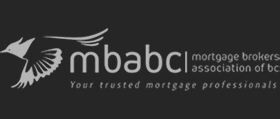Many homes in the Greater Vancouver area built before 1957 were originally heated with furnace oil. When natural gas became available, the oil storage tanks, which were normally located underground in backyards, were filled with sand or capped.
However, as these unused buried oil tanks start to corrode and rust, the remaining oil can leak out and flow onto the rest of the owner’s property, the neighbour’s property, storm sumps and waterways, resulting in contamination of soil and water. Apart from the negative financial impact on the market value of the property, the owner can face substantial legal liability under various statutes and bylaws for such contamination.
 The BC Fire Code and bylaws of twelve municipalities (including the City of Vancouver) all essentially require that out-of-service underground oil storage tanks (USTs) be removed and that all contaminated soil must be removed and replaced with clean fill.
The BC Fire Code and bylaws of twelve municipalities (including the City of Vancouver) all essentially require that out-of-service underground oil storage tanks (USTs) be removed and that all contaminated soil must be removed and replaced with clean fill.
Exceptions
A very limited exception may be granted by the fire authority where the removal of the UST is impractical because it is located under a permanent structure or its removal would endanger the structural integrity of nearby buildings.
In that case, the owner would still have to render the UST “inert” in accordance with “good engineering practices.” That would include arranging, at their own expense, for the remaining oil to be pumped out, for the tank to be filled with sand and all piping to be capped, as well as arranging for the removal of contaminated soil and replacing it with clean fill.
In addition, written verification of such work must be provided by a licensed contractor to the fire authority.
Responsibility for Removal
The responsibility for the removal of the UST and remediation of any contamination falls on the current property owner.
The costs of such removal can be high depending on how much remediation work is involved. However, if the UST is ignored and not dealt with promptly and correctly, the costs can be exponentially more.
In one case that was reported in 2008, an owner of a West Vancouver home, who bought the home in 2000 not apparently aware that there was a buried oil tank, had to spend close to $160,000 to remove 5,000 liters of contaminated fuel from a leaky home-heating oil tank that had not been used in 25 years!
Such cases are rare, but it does highlight the need to conduct due diligence when buying a home that may have an unused underground oil tank.
Contamination
In addition to the BC Fire Code and municipal by-law requirements, the owner may also be subject to the Environmental Management Act of BC if the concentration of the contaminants present in the soil or groundwater exceeds the allowable limits prescribed for residential properties and therefore meets the definition of a “contaminated site.”
In that event, the owner can be ordered to undertake remediation of the property and neighbouring properties if the contamination has spread. It may be possible for the owner to recover some of the costs incurred from more culpable previous owners through a “cost recovery action” pursuant to the Environmental Management Act, but only if they can be found and have the resources to pay.
An owner or former owner may also be found liable under commonlaw nuisance for failing to take steps to prevent seepage of oil to neighbouring properties.





